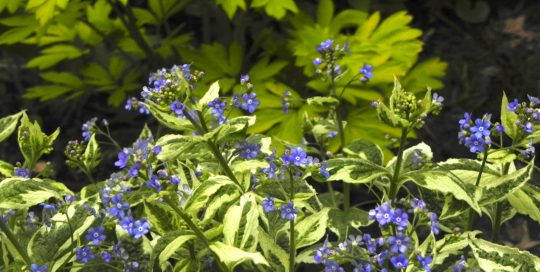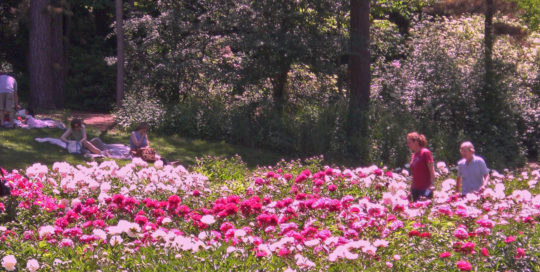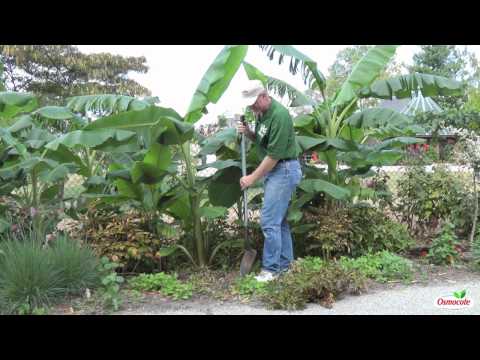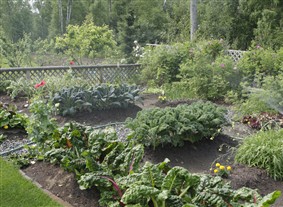I don’t know anyone who doesn’t appreciate the beauty of a peony. Sure, there are complaints that they don’t last long enough, or that they flop, but those two issues can be crossed off the negative list by choosing the right plants and planting them in the right place. The most readily available peonies can be divided into three different types: herbaceous peonies, tree peonies and intersectional peonies.
Herbaceous Peonies
The peonies we are most familiar with are the herbaceous types, some call “bush peonies.” These are not truly bushes, but perennial plants that die back to the ground in fall and sprout from just beneath the soil level the following spring. Herbaceous peonies range in color from white to deep red. Some flowers contain more than one color, and their number of petals range from just a few in the case of a single form, to hundreds held in layers on full doubles.
Herbaceous peonies are very forgiving as long as you give them plenty of sun and don’t plant them too deeply. Full double-flowering plants most likely need to be staked. Period. The rule of thumb is, the fewer the petals and shorter and stronger the stems, the less likely they’ll need support. Another important factor in keeping peonies upright is providing them with enough sun. If planted in a shady location, their stems will stretch toward the sun, making them unlikely to hold their heads up after a rain storm.
Bloom times for herbaceous peonies in temperate climates range from as early as April to as late as late June, falling into categories designated as early season, mid-season, and late season. For gardeners, it pays to plant a wide range of peonies, chosen for their bloom times.
Tree Peonies
Less common because of their more challenging cultural requirements and expense are tree peonies, another misnomer because tree peonies are actually woody shrubs. Tree peonies are often sold grafted onto an herbaceous peony rootstock. The ancient technique involves cutting a bud from a tree peony and fusing it to an herbaceous peony root. The herbaceous roots grow quickly compared with those of the tree peony, and provide physical support and nutrients to the woody plant until it develops its own roots. The technique not only requires expertise; it necessitates extra time spent growing at the nursery for the tree peony to establish its own roots. Reputable sources cultivate the grafted plant for at least three years before offering it for sale.
Tree peonies should be planted out of the wind and can take a bit more shade than their herbaceous cousins. They can take even longer to settle in and bloom. Their brittle stems are prone to breaking in strong winds or under the weight of heavy flowers. During a cold winter, exposed buds can freeze, or even be eaten by deer. Tree peonies have less of a bloom time range, and flower from early to mid-season.
Intersectional Peonies
The newest peony in town is the Intersectional, or Itoh peony. Intersectionals were developed by crossing an herbaceous and a tree peony. The name “Itoh” refers to Toichi Itoh, the Japanese plantsman who made the first successful cross. Sadly, he died before they bloomed in the early 1960s and the plants fell into obscurity until word got around to a New York nurseryman who registered them with the American Peony Society in 1974.
At first, the intersectional peony’s first claim to fame was its flower color. It was the first yellow-flowered herbaceous peony, something peony hybridizers had been working toward for generations. A handful of American peony breeders have improved upon the original plants, but it was Roger Anderson of Wisconsin who created the biggest buzz with his introduction of ‘Bartzella’ in 1986.
Since the introduction of ‘Bartzella’ and ‘Garden Treasure’ in 1984, prices have come down to around $60, which is not bad for such an exotic-looking easy-to-care-for plant. Its planting method and cultural requirements are similar to those of the herbaceous peony.
In addition, the benefits of the Intersectional peony are numerous:
- Intersectional peonies are disease-resistant.
- They have secondary buds, allowing for longer bloom time.
- Staking is not required if planted in full sun.
- The flowers on most varieties look more like those of tree peonies in size and form.









